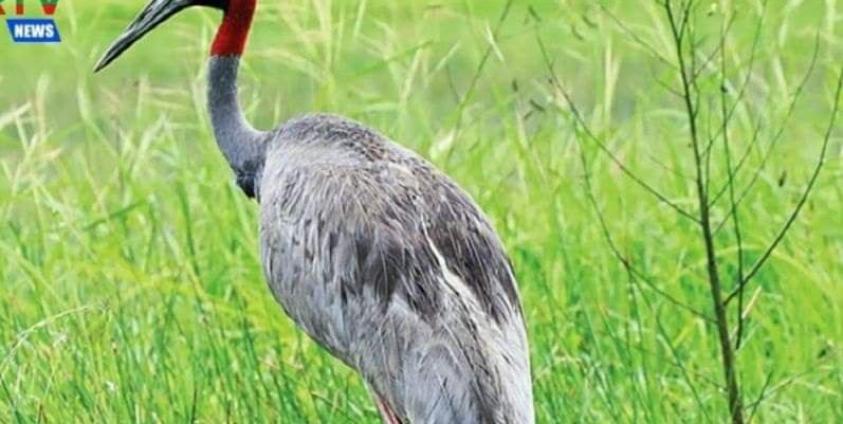Environmental and biodiversity activists have underscored the imperative of preserving the Sarus Cranes in Rakhine, given the critical risk of their extinction.According to the Rakhine State Biodiversity and Environmental Conservation Association, these birds are commonly observed in Mrauk-U and Rathedaung townships within Rakhine State, and there is a possibility of their presence in other townships.
Ko Yan Naung Soe, the president of the Rakhine Biodiversity and Environmental Conservation Association, remarked, "These birds are not found in large numbers. When traveling to Mrauk-U by ship or boat, you may spot only 4 to 6 birds. Their primary feeding grounds are located near Than Ta Yar village, just before reaching Mrauk-U township."
In the rainy season, these birds construct their nests in rice paddies and fields for breeding purposes. Once the eggs are laid, the incubation period spans around 30 days, or roughly a month. "I've held a longstanding ambition to contribute to crane conservation. However, without specific projects, it remains beyond our grasp. We must venture into the habitats of Sarus Cranes for research and conduct awareness talks within the neighboring villages," said Ko Yan Naung Soe.
The Sarus Cranes face the imminent threat of extinction, primarily due to factors such as habitat loss, the agricultural use of pesticides, egg collection from crane nests, and the destruction of their nesting sites.
A resident of Than Ta Yar village in Mrauk-U township remarked, "The cranes have arrived, but approaching them is not possible. During this season, they lay eggs in the fields. We have a hard time identifying the specific features of these birds."
According to the Department of Environment and Wildlife Conservation, Myanmar is home to three crane species: the Sarus Cranes, Common Cranes (bird migration), and Demoiselle Cranes.
However, in Rakhine State, there is currently no established conservation organization dedicated to the protection of the Sarus Crane species. Consequently, the exact population figures and the location of their feeding grounds remain uncertain.
On the International Union for Conservation of Nature (IUCN) Red List of Threatened Species, the Sarus Cranes are classified as "vulnerable."
The Rakhine State Forestry Department has underscored the limited knowledge of the Sarus Crane population in Rakhine State and has advocated for the establishment of a dedicated wildlife and bird department to ensure their protection and conservation.
U Aye Min Hlaing, the deputy director of the Rakhine State Forestry Department, stated, "Pinpointing the exact locations where Sarus Cranes reside is a bit challenging. We currently lack data about them in our state, and there is no dedicated wildlife and bird department in place. The possibility of establishing a wildlife and bird department is being considered, which would enablesto consistently address this issue."
In Myanmar, Sarus Cranes are predominantly found in the Ayeyarwady Region and Rakhine State, with smaller populations also residing in the Bago Region, Shan State, and Kachin State.








